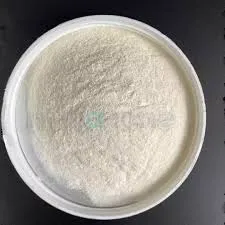
Nov . 07, 2024 02:01 Back to list
hydroxy methyl cellulose
Hydroxypropyl methylcellulose (HPMC) is a versatile and widely used cellulose derivative with applications across various industries. It is produced by the chemical modification of cellulose, which is a natural polymer derived from plant cell walls. HPMC is known for its excellent film-forming properties, water solubility, and thickening ability, making it valuable in numerous formulations.
One of the primary uses of HPMC is in the pharmaceutical industry, where it serves as an excipient in drug formulations. Due to its ability to absorb water and form gels, it is often used as a binding agent in tablets and capsules. Additionally, HPMC is employed in controlled-release formulations, where it helps regulate the release of active pharmaceutical ingredients over an extended period. This property ensures a more consistent therapeutic effect and enhances patient compliance.
In the field of food technology, HPMC functions as a food additive that can improve texture and stability. It is commonly used in a variety of products, including sauces, dressings, and bakery items. By enhancing viscosity and acting as an emulsifier, HPMC helps create smooth and stable mixtures, improving the overall quality of food products. Its role as a fat replacer in low-fat and reduced-calorie foods is also notable, as it provides a desirable mouthfeel without adding extra calories.
hydroxy methyl cellulose

Moreover, HPMC is extensively utilized in construction materials, particularly in the formulation of cement-based products like adhesives, mortars, and grouts. It enhances workability and providing improved adhesion properties, making it easier to apply and ensuring better performance of the final product. The inclusion of HPMC in these formulations also increases water retention, allowing for better curing of the materials.
In cosmetics and personal care products, HPMC is valued for its thickening and stabilizing properties. It is often found in lotions, creams, and gels, where it aids in achieving the desired viscosity and texture. Its mild and non-irritating nature makes it suitable for sensitive skin formulations.
Overall, hydroxypropyl methylcellulose is a multifunctional ingredient that plays a crucial role in various industries, from pharmaceuticals to food and construction
. Its unique properties continue to drive innovation and improve the quality of products across the board.-
Versatile Hpmc Uses in Different Industries
NewsJun.19,2025
-
Redispersible Powder's Role in Enhancing Durability of Construction Products
NewsJun.19,2025
-
Hydroxyethyl Cellulose Applications Driving Green Industrial Processes
NewsJun.19,2025
-
Exploring Different Redispersible Polymer Powder
NewsJun.19,2025
-
Choosing the Right Mortar Bonding Agent
NewsJun.19,2025
-
Applications and Significance of China Hpmc in Modern Industries
NewsJun.19,2025







